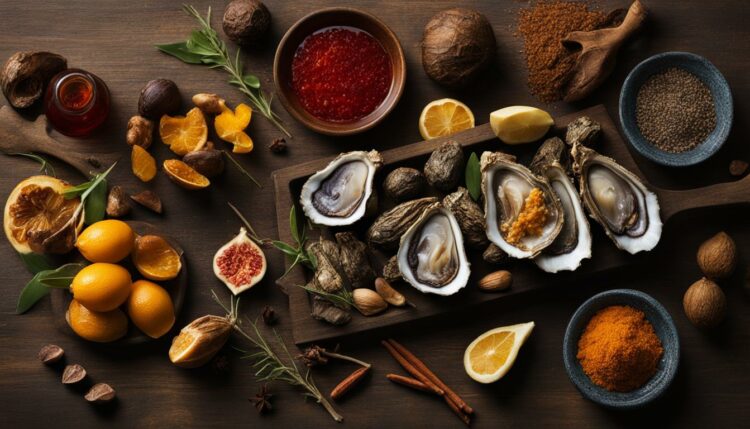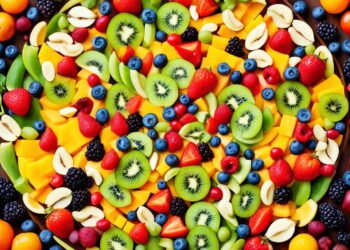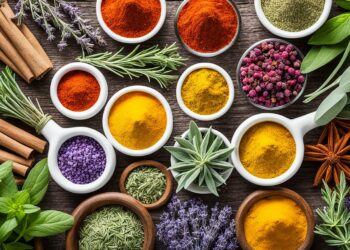Did you know that the history of aphrodisiacs dates back thousands of years? These intriguing substances have been used across various cultures and civilizations to enhance romance and desire.
From ancient aphrodisiac recipes to the modern understanding of their efficacy, the world of aphrodisiacs is captivating and full of surprises.
Key Takeaways
- Aphrodisiacs have a rich cultural and culinary heritage, with a history that spans ancient civilizations to modern science.
- Aphrodite, the goddess of love and beauty in ancient Greek mythology, played a significant role in the origins of aphrodisiacs.
- Ancient cultures believed that certain foods and rituals could enhance sexual desire and fertility.
- The historical and cultural significance of aphrodisiacs is reflected in their widespread acceptance and usage throughout different civilizations.
- While modern science may have debunked some claims, the allure and fascination with aphrodisiacs continue to persist.
Aphrodite and the Origins of Aphrodisiacs
The name aphrodisiac derives from Aphrodite, the goddess of love and beauty in ancient Greek mythology. Aphrodite was associated with love, desire, and fertility, and her influence led to the belief in the power of certain foods and rituals to enhance sexual desire.
Ancient Greece and Rome embraced the concept of aphrodisiacs, often attributing them to mythical figures and deities. These civilizations believed that specific foods possessed aphrodisiac properties, capable of heightening desire and passion.
Aphrodite’s association with the sea influenced the belief that seafood, such as oysters, clams, and mussels, possessed aphrodisiac qualities. Suggestive-shaped foods, like bananas and asparagus, were also considered to have a sensual effect.
Arousing aromas, such as those emitted by spices and herbs like cinnamon and ginger, were believed to stimulate desire.
Roses, which were considered Aphrodite’s favorite flower, were used in seduction rituals and associated with love. Their enticing fragrance and delicate petals symbolized passion and romance.
Aphrodite’s influence on the perception of aphrodisiacs reveals the human fascination with the power of sensual foods and the desire to enhance romantic experiences.
Aphrodisiacs in Ancient Cultures
In ancient cultures, fertility was closely linked to the prosperity of the land. The desire to ensure both male and female potency stemmed from the belief that procreation was not just a personal desire, but also a moral and religious duty.
Ancient fertility beliefs understood that undernourishment could lead to a loss of libido and reduced fertility rates, so certain foods were sought after to stimulate desire and maintain the body’s function.
Genitalia-shaped foods, such as carrots, asparagus, figs, and artichokes, were considered stimulating due to their visual resemblance to sexual organs. It was believed that consuming these foods could enhance sexual energy and promote fertility.
Similarly, bulbous foods like eggs, beets, and fennel were thought to possess sexual power.
In addition to the shape of the foods, the sensory experience they provided played a significant role. Ancient cultures valued foods with a sensual mouthfeel, such as oysters, which were not only associated with fertility but also regarded as aphrodisiacs due to their texture and delicate flavor.
Spices were also highly regarded as aphrodisiacs in ancient cultures. The aromatic and pungent nature of spices like cinnamon, saffron, and ginger were believed to raise body temperature and energize the senses. These spices were often incorporated into dishes to create a sensory experience that stimulated desire.
“Ancient cultures believed that certain foods and spices had the power to enhance fertility and promote desire.”
Aphrodisiacs played a crucial role in ancient societies, where fertility was of paramount importance. By consuming genitalia-shaped foods, embracing sensual mouthfeel, and using spices as aphrodisiacs, ancient cultures sought to maintain and elevate their sexual vitality.
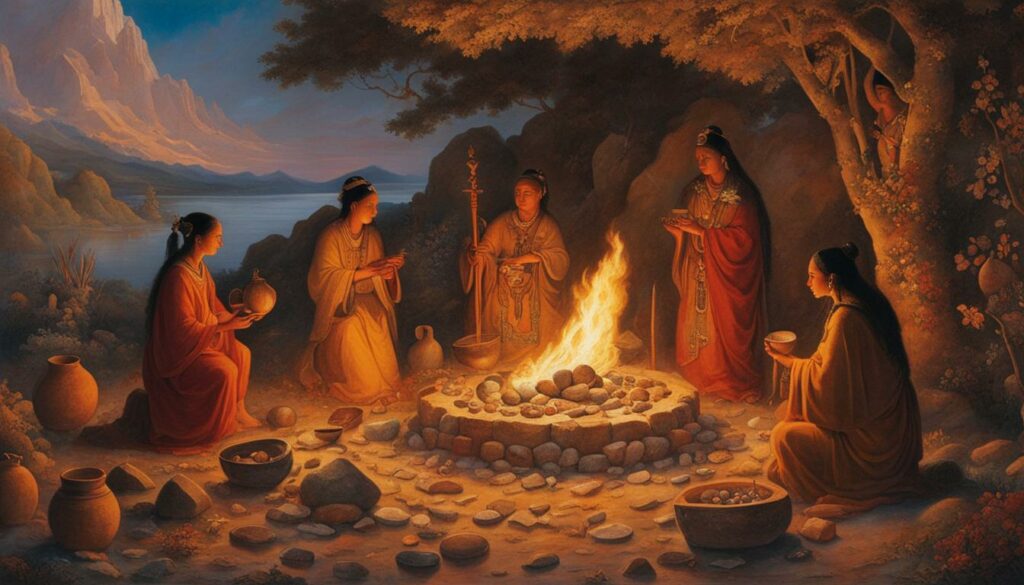
| Foods | Benefits |
|---|---|
| Genitalia-shaped foods (carrots, asparagus, figs, artichokes) | Stimulating and believed to enhance sexual energy and fertility |
| Bulbous foods (eggs, beets, fennel) | Thought to possess sexual power and promote desire |
| Sensuous mouthfeel foods (oysters) | Valued for their delicate texture and flavor, enhancing sensual experience |
| Spices (cinnamon, saffron, ginger) | Believed to raise body temperature and energize the senses |
Aphrodisiacs and the Evolution of Desire
The earliest written record of Aphrodite’s influence on desire can be found on wine cups from ancient Greece. These cups bore inscriptions linking drinking and desire, highlighting the association between alcohol and the arousal of sexual desire.
Modern interpretations of this connection can be seen in the rose cocktail, a drink served at aphrodisiac-themed events. The rose cocktail, paired with a home-cooked meal, has become an iconic symbol of Aphrodite and the power of aphrodisiacs.
To delve into the historical significance of Aphrodite’s influence on desire, let’s explore the written record and the role of alcohol in enhancing romantic experiences.
“Drinking and desire accompany each other.”
— An inscription on an ancient wine cup
The ancient Greeks held a deep appreciation for Aphrodite, the goddess of love, and believed that consuming wine could stimulate desire and enhance sensual experiences.
This association between drinking and desire has carried on through the centuries, with the rose cocktail serving as a modern embodiment of Aphrodite’s influence.
The rose cocktail, often garnished with rose petals and featuring floral notes, encapsulates the allure and mystique of Aphrodite. Sipping this enchanting drink can transport individuals to a realm of passion and desire, evoking a sense of romance and sensuality.
For those seeking to explore the connection between aphrodisiacs, desire, and culinary pleasures, attending culinary workshops can be an enlightening experience.
These workshops offer an opportunity to learn how to make delectable dishes guided by aphrodisiac ingredients, as well as to partake in interactive discussions about the history and mythology surrounding ancient love potions.
The Rose Cocktail Recipe
Unleash your inner Aphrodite with this delightful rose cocktail recipe:
- Ingredients:
- 2 oz gin or vodka
- 3/4 oz rose syrup
- 1/2 oz fresh lemon juice
- 2 dashes orange bitters
- Rose petals, for garnish
- Instructions:
- In a cocktail shaker filled with ice, combine gin or vodka, rose syrup, fresh lemon juice, and orange bitters.
- Shake vigorously until well-chilled.
- Strain into a chilled coupe or martini glass.
- Garnish with rose petals.
Now, you’re ready to savor the flavors of desire with the rose cocktail, an enticing elixir that pays homage to Aphrodite’s influence over love, pleasure, and the art of seduction.
The Historical and Cultural Significance of Aphrodisiacs
Aphrodisiacs have played a prominent role in human culture since ancient times, with a rich history of widespread acceptance and usage across various civilizations. Contrary to expectations, religious authorities did not suppress the use of aphrodisiacs.
In fact, they were embraced and systematically incorporated into medical practices by apothecaries in the Islamic, Judaic, and Christian worlds.
These potent substances were accommodated within the worldviews of monotheistic religions, recognizing their value in enhancing desire and promoting intimacy within the bounds of religious piety.
Traditional pharmacies in African and South American cultures also held a significant place for aphrodisiacs. These cultures embraced the use of natural aphrodisiacs, recognizing their potential to enhance sexual experiences and promote fertility.
| Religious Acceptance | Apothecaries | Traditional Pharmacies |
|---|---|---|
| – Monotheistic religions accommodating aphrodisiacs within their worldviews | – Systematic incorporation into medical practices | – Embracing natural aphrodisiacs |
| – Enhancing desire within the bounds of religious piety | – Recognizing the value of aphrodisiacs in promoting intimacy | – Emphasizing sexual experiences and fertility |
The historical and cultural significance of aphrodisiacs is a testament to their enduring appeal and impact on human relationships and desires.
Historical Use of Aphrodisiacs
Throughout the medieval and early modern era, aphrodisiacs were employed as remedies to enhance sexual desire and performance.
These historical records shed light on the cultural importance and impact of aphrodisiacs during different periods. From potions and powders to exotic herbs and elixirs, a wide range of ingredients were used to create these ancient love tonics.
African and South American Cultures
In African and South American cultures, traditional pharmacies served as vital hubs for aphrodisiacs. The use of potent herbs, spices, and natural remedies was deeply rooted in cultural beliefs and practices aimed at promoting fertility, enhancing passion, and strengthening intimate connections.
Overall, the historical and cultural significance of aphrodisiacs illustrates the timeless human pursuit of pleasure, passion, and intimacy, as well as the diverse ways in which different societies incorporated aphrodisiacs into their beliefs, rituals, and medical traditions.
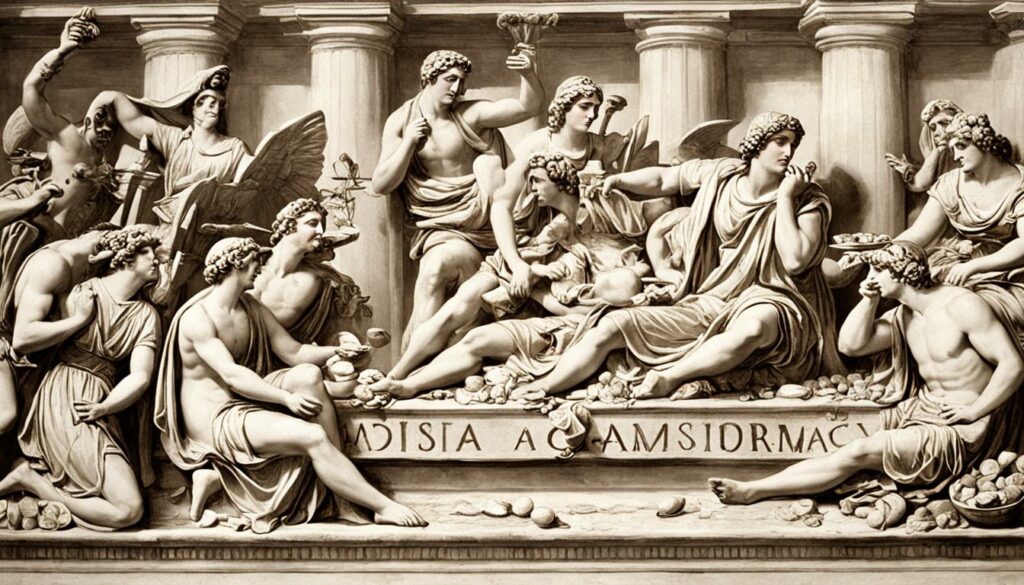
“The historical and cultural significance of aphrodisiacs is a testament to their enduring appeal and impact on human relationships and desires.”
The Decline of Aphrodisiacs in Modern Science
Modern scientific biomedicine has taken a skeptical stance towards aphrodisiacs, discrediting their supposed powers as mere wishful thinking and quackery.
Unlike ancient times when aphrodisiacs were widely accepted and incorporated into cultural practices, modern pharmacological research has shown a lack of scientific investigation into these substances.
One brief period of interest in aphrodisiacs came with the rise of sex-steroid hormone endocrinology, which explored the potential of hormones in enhancing sexual desire. However, this approach shied away from making explicit claims about hormones as sexual remedies.
Instead, modern science has embraced the development of pharmaceuticals like Viagra and Addyi to address sexual dysfunction and enhance sexual desire. These medications, while different from traditional aphrodisiacs, have renewed the promise of boosting libido and pleasure by targeting specific bodily mechanisms.
The decline of traditional aphrodisiacs in modern science can be attributed to the lack of rigorous scientific investigation and the emergence of pharmaceutical solutions that provide targeted and measurable results.
While the allure of aphrodisiacs persists in popular culture and folklore, their efficacy remains a subject of debate and skepticism.
The Sensuality of Truffles as an Aphrodisiac
Truffles have long been regarded as potent aphrodisiacs, captivating admirers with their rarity and allure. These exquisite delicacies possess an irresistible scent that can evoke strong feelings of attraction and desire.
Truffle hunting, a tradition dating back centuries, plays a crucial role in unearthing these hidden treasures. Pigs or dogs are employed to sniff out the valuable fungi, as humans are unable to detect their presence without assistance. This adds to the mystique surrounding truffles, heightening their desirability.
The alluring scent of truffles shares striking similarities with male pheromones, which are known to trigger chemical reactions in the brain associated with attraction. It is believed that the aroma of truffles can stimulate senses and enhance romantic experiences.
While truffles’ nutritional composition contributes to their potential aphrodisiac qualities, such as their high protein content, their allure extends beyond mere sustenance. Truffles possess an almost ineffable quality that captivates the senses and seduces the palate, making them a truly enchanting delicacy.
Intriguingly, truffles have held their fascination throughout history, adorning the tables of royalty and tempting the most discerning of palates. Their status as aphrodisiacs continues to captivate culinary enthusiasts and romantics alike, making them a truly indulgent and sensuous treat.
| Truffle Variety | Region | Aroma |
|---|---|---|
| White Truffle (Tuber magnatum) | Italy, France | Strong, garlicky, and earthy aroma |
| Black Truffle (Tuber melanosporum) | France, Spain, Italy | Intense, rich, and musky aroma |
| Summer Truffle (Tuber aestivum) | France, Italy | Subtle, delicate, and nutty aroma |
| Burgundy Truffle (Tuber uncinatum) | France | Earthy, hazelnut aroma with hints of garlic |
Conclusion
Aphrodisiacs have played a significant role in human culture throughout history, captivating our imagination and tantalizing our taste buds. Their historical and cultural significance, combined with their culinary delights, continue to bewitch and fascinate us.
Despite modern science casting doubt on some of the claims surrounding aphrodisiacs, their appeal and sensuality endure, highlighting our timeless fascination with enhancing desire.
From ancient civilizations to the present day, aphrodisiacs have held a special place in our collective consciousness. They have been sought after for their supposed ability to arouse passion and intensify romantic experiences.
While some may view aphrodisiacs as mere folklore, their enduring popularity suggests that the desire to kindle the flames of desire remains an eternal pursuit.
Whether it be the vibrant spices of ancient cultures, the suggestive-shaped foods of the past, or the allure of elusive truffles, aphrodisiacs have left an indelible mark on our culinary landscape.
While we may not always fully understand the science behind their effects, the ongoing fascination with these tantalizing substances speaks to their enduring allure and cultural significance.
FAQ
What are aphrodisiacs?
Aphrodisiacs are substances, foods, or rituals that are believed to enhance sexual desire and performance.
How did aphrodisiacs get their name?
The name aphrodisiac comes from Aphrodite, the ancient Greek goddess of love and beauty.
What foods were considered aphrodisiacs in ancient cultures?
Foods such as seafood, suggestive-shaped foods, sensual foods, and those with arousing aromas were believed to have aphrodisiac properties in ancient cultures.
Were aphrodisiacs used for fertility in ancient cultures?
Yes, aphrodisiacs were sought after in ancient cultures to enhance both male and female potency and promote fertility.
How were aphrodisiacs incorporated into religious practices?
Aphrodisiacs were accepted and used in various religious traditions, including those of monotheistic religions, and were incorporated into medical practices by apothecaries.
Is there scientific evidence to support the effectiveness of aphrodisiacs?
Modern scientific research has not extensively investigated traditional aphrodisiacs, leading to mixed views on their efficacy.
Are truffles really considered aphrodisiacs?
Truffles have long been associated with aphrodisiac properties due to their rarity, alluring scent, and resemblance to male pheromones.
Do modern pharmaceuticals have aphrodisiac effects?
Modern pharmaceuticals like Viagra and Addyi have been developed to enhance sexual desire, but they differ from traditional aphrodisiacs used throughout history.
